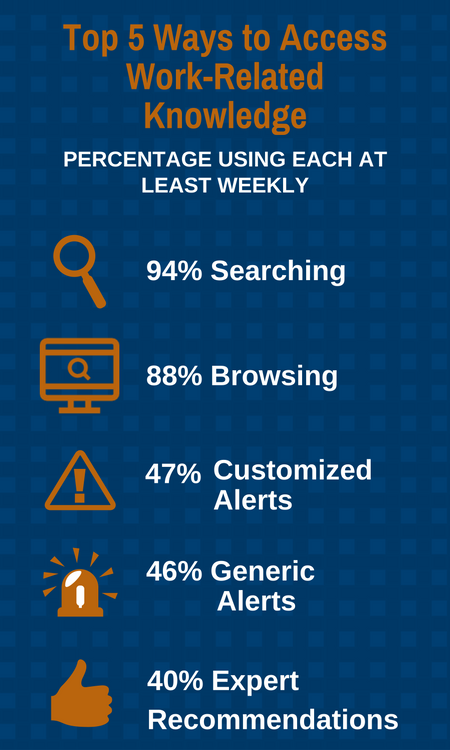 People everywhere celebrated Waffle Day on March 25 but remember: Waffles are delicious, but waffling is bad. If your knowledge management program leaves employees waffling about whether to choose Path A or Path B, it’s not doing its job.
People everywhere celebrated Waffle Day on March 25 but remember: Waffles are delicious, but waffling is bad. If your knowledge management program leaves employees waffling about whether to choose Path A or Path B, it’s not doing its job.
If you’ve been waffling about how to improve the KM resources your employees need to make effective decisions, our latest research might provide some insight.
Employees need consistent access to trustworthy, relevant information, and chances are that’s what your KM program is all about. Yet, APQC’s Preparing for the Future of Work study found that employees are often less than satisfied with their access to the information they need at work.
Traditional KM tools are great, but employees can also be overwhelmed by the sheer number of strategies available to access information. Searching and browsing can deliver too many results, without the context people need to find the answers they really need. So, they fall back on their own ingenuity, experimenting with a range of techniques to filter out the noise.
Here’s what employers can learn from what their employees are already discovering on their own.
Employees are using alerts, recommendations, and social feedback to determine which information sources are most credible:
- 61 percent review enterprise information based on its popularity—such as lists of frequently downloaded information—at least once a month.
- Nearly half use customized or generic alerts more than once a week to point them to new, updated, or high-value resources.
They’re working their networks to zero in on information that colleagues have found useful:
- Two-thirds use posts and recommendations in communities of practice to find work-related knowledge and information at least monthly, and about one-third do so more than once a week.
- Posts and recommendations in enterprise social networks are only slightly less popular.
- Millennials are especially focused on peer-based recommendations.
Employees are also tapping into technology:
- Almost half have used an advanced analytical model to find work-related information, and a roughly equal number have found answers through a digital assistant such as Siri, Cortana, or Google Now.
- Advanced analytical models that are incorporated into the back-end of enterprise search functions are on the rise.
So, how can your organization help employees stop waffling about what information to pay attention to?
- Support access to experts by clearly linking KM content or documents with the bios and contact information of the experts who “own” them.
- Stay current with the rapid evolution in digital assistants and advanced analytics, which can improve accuracy and make results more relevant to users.
- Provide multiple entry points into information repositories, along with sophisticated tools that help employees find information across systems.
Giving employees easy access to information—without overwhelming them with too much irrelevant data—helps employees stop waffling and excel in their jobs, which makes them want to engage and stick around for the long haul.
For more information, APQC members can check out our white paper, Preparing for the Future of Work: The Latest Trends in Office Design, HR Policy, Collaboration, and Search and Information Delivery. And everyone can download the free study overview and recorded webinar on this research.